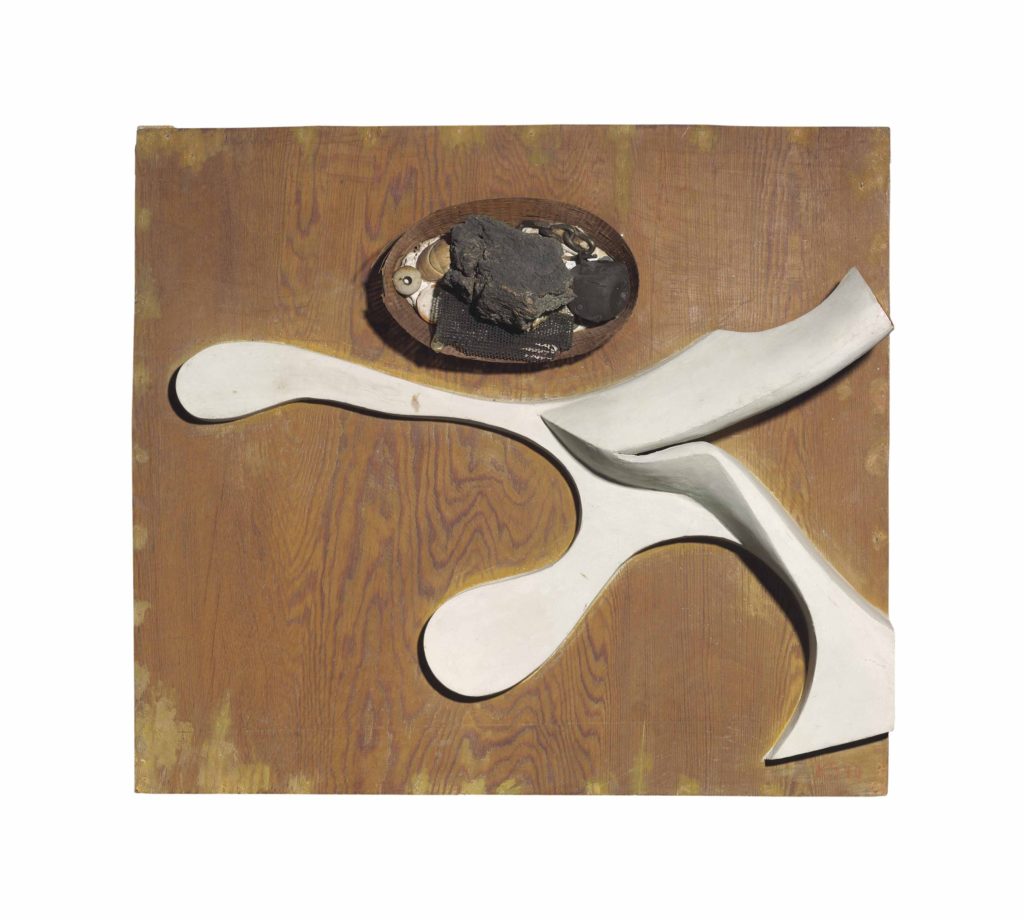Das Korbbild

The large assemblage Das Korbbild by the German artist Kurt Schwitters was most likely made while the artist lived in Norway. A rather remarkable work, an amoebic yet elegant gesso figure mounted on a simple wooden board, the relief is quite deep and the boundary between picture and sculpture is nearly eclipsed.
The little basket with a few shells, stones and a chain remnant attached to it constitutes a tangible still life and gives the work a charming, artful appearance. The gesso element is a direct reference to the freestanding sculptures he made during the 30s, among themDas Schwert des Deutschen Geistes, which is also in the collection.
It may seem surprising that an artist of Kurt Schwitters’ standing chose to stay for long periods in Norway. He travelled here for the first time in 1929 with his wife Helma, when they took a two-weeks cruise north along the Norwegian coast as far as Svalbard. Throughout the 1930s he returned to Norway, either alone or together with Helma and their son Ernst. Schwitters visited not only in summer, but also during the other seasons, and often for weeks and months at a time. Because of the tense situation in his homeland, the family was forced to flee in 1937, and they chose to settle in Lysaker on the outskirts of Oslo. They lived here for three years before being forced to flee once again, after the German invasion of Norway. Father and son travelled to Great Britain, while Helma returned to Germany.
OWG